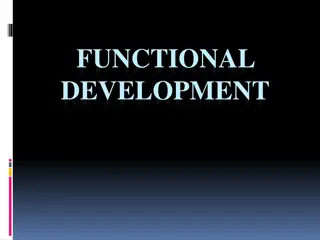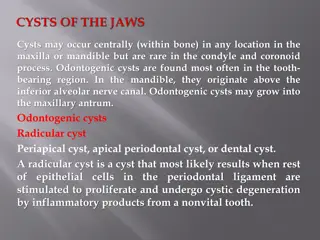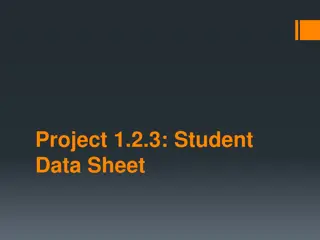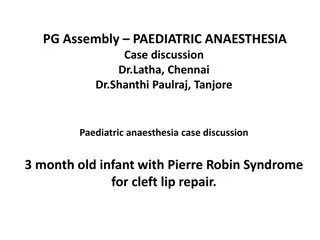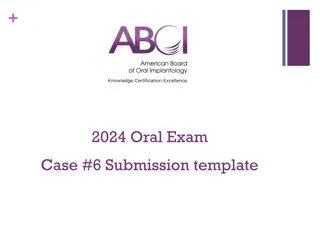Periodontal and Peri-Implant Surgical Anatomy Overview
Sound knowledge of the anatomy of the periodontium and surrounding tissues is essential for successful periodontal and implant surgical procedures. This includes understanding the mandible and maxilla anatomy, muscles, anatomic spaces, and landmarks like the mandibular canal. Proper awareness can he
9 views • 41 slides
Understanding Orofacial Development and Functions in Dentistry
Explore the intricate orofacial structures, including dental arches, naso-maxillary complex, mandible, and muscles of expression, mastication, and deglutition. Learn about the various functions performed by the orofacial complex, such as mastication, deglutition, respiration, and speech. Dive into t
1 views • 23 slides
Understanding the Temporomandibular Joint (TMJ) Anatomy
The temporomandibular joint (TMJ) is a complex joint formed by the articulation between the temporal bone and the mandible. It consists of a fibrous intra-articular disk that aids in movement and stability. The disk is biconcave with anterior and posterior bands, and attachments to ligaments and mus
0 views • 45 slides
Understanding Odontogenic Cysts in Maxillofacial Region
Odontogenic cysts may occur centrally within bones of the maxilla and mandible, predominantly in tooth-bearing areas. Types include radicular cysts, residual cysts, and dentigerous cysts, each with distinct radiographic features and epicenter locations. Radicular cysts are commonly found around nonv
0 views • 7 slides
Sex Determination Through Bone Analysis in Forensic Anthropology
In forensic anthropology, the pelvis and skull are crucial in sex determination, with additional assistance from femur, tibia, and humerus measurements. This data sheet guides on circling male or female based on traits like sub-pubic angle, pelvic cavity shape, eye orbit sharpness, zygomatic process
0 views • 33 slides
Exploring the Human Skeletal System
The skeletal system plays crucial roles in supporting the body, protecting internal organs, facilitating movement with muscles, and producing blood cells. It consists of various bone structures like periosteum, compact bone, spongy bone, and bone marrow. The cranium houses important bones such as th
0 views • 53 slides
Paediatric Anaesthesia Case Discussion: Challenges of Anaesthetizing an Infant with Pierre Robin Syndrome
Pierre Robin Syndrome (PRS) presents challenges in paediatric anaesthesia, especially in infants undergoing procedures like cleft lip repair. PRS is characterized by micrognathia, glossoptosis, and respiratory distress. Other syndromes associated with cleft lip include Treacher Collins syndrome, Gol
0 views • 56 slides
Comprehensive Oral Exam Case #6: Edentulous Implant Restoration Template
This submission template includes detailed images and information for an oral exam case involving an edentulous posterior mandible or maxillary quadrant with root form implants, medical history, patient examination, social history, radiographs, treatment planning, prosthodontic rehabilitation plan,
0 views • 27 slides

